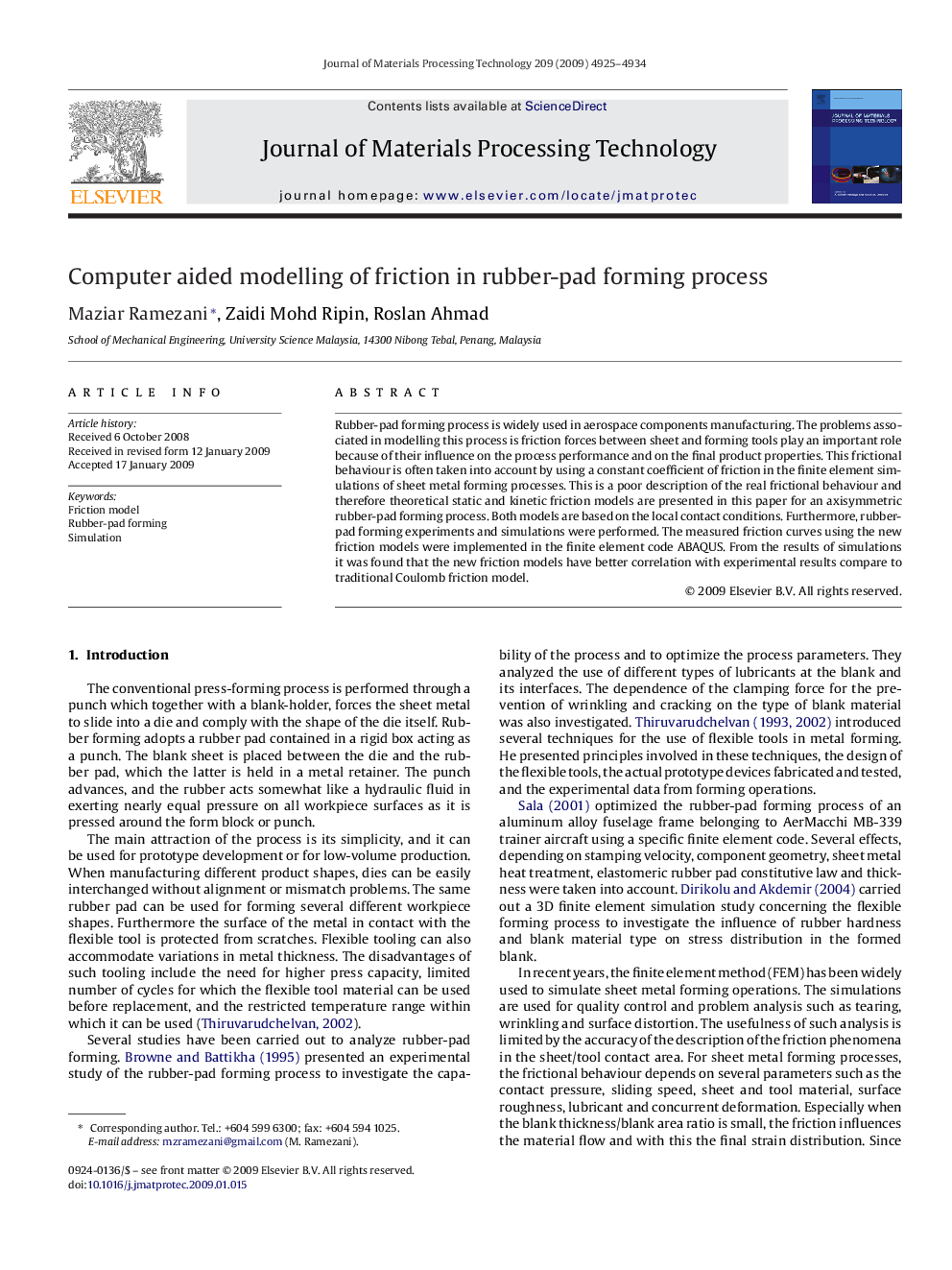| Article ID | Journal | Published Year | Pages | File Type |
|---|---|---|---|---|
| 793404 | Journal of Materials Processing Technology | 2009 | 10 Pages |
Rubber-pad forming process is widely used in aerospace components manufacturing. The problems associated in modelling this process is friction forces between sheet and forming tools play an important role because of their influence on the process performance and on the final product properties. This frictional behaviour is often taken into account by using a constant coefficient of friction in the finite element simulations of sheet metal forming processes. This is a poor description of the real frictional behaviour and therefore theoretical static and kinetic friction models are presented in this paper for an axisymmetric rubber-pad forming process. Both models are based on the local contact conditions. Furthermore, rubber-pad forming experiments and simulations were performed. The measured friction curves using the new friction models were implemented in the finite element code ABAQUS. From the results of simulations it was found that the new friction models have better correlation with experimental results compare to traditional Coulomb friction model.
